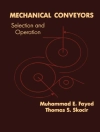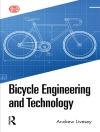- Addresses the issue of the poultry sector’s over-reliance on a limited number of feed ingredients
- Considers the effects of alternative protein sources on poultry performance, molecular responses and meat/egg quality
- Reviews the emergence of non-conventional protein sources for use in poultry diets, such as insect meal, algae, corn fermented protein and distillers dried grains and solubles
Inhaltsverzeichnis
- Chapter 1 – Microalgae: a unique source of poultry feed protein: Sahil Kalia, Andrew D. Magnuson, Guanchen Liu and Xin Gen Lei, Cornell University, USA;
- 1 Introduction
- 2 Nutrient composition of microalgae as alternative feed protein and bioactive nutrient sources
- 3 Effects and values of microalgae as a supplement in broiler diets
- 4 Effects and values of microalgae as a supplement in laying hen diets
- 5 Potential of microalgae as a supplement in diets for other poultry species
- 6 Conclusion and future trends
- 7 Where to look for further information
- 8 References
- Chapter 2 – Use of protein from black soldier flies in poultry feed: Arya Rezaei Far, Somaya Naser El Deen, Teun Veldkamp, Wageningen University and Research, The Netherlands;
- Chapter 3 – Use of protein from yellow mealworms in poultry feed: M. Mabelebele, E. Malematja, S. D. Kolobe, T. G. Manyelo, N. A. Sebola and F. Manyeula, University of South Africa, South Africa;
- 1 Introduction
- 2 Electronic database accessibility and acquisition of literature
- 3 The production of conventional protein sources (fishmeal and soybean meal) vs insect larvae
- 4 Inclusion of yellow mealworm in poultry diets
- 5 Conclusion
- 6 Recommendation and future direction
- 7 Conflict of interest
- 8 Ethics approval
- 9 Authors’ contribution
- 10 Acknowledgement
- 11 Where to look for further information
- 12 References
- Chapter 4 – Emerging protein sources for poultry feed: Archibold G. Bakare, Fiji National University, Fiji Islands; Taiye Olugbemi, Ahmadu Bello University, Nigeria; Mohammed M. Ari, Nasarawa State University, Nigeria; and Paul A. Iji, Fiji National University, Fiji Islands and University of New England, Australia;
- 1 Introduction
- 2 Challenges in using conventional protein sources in poultry diets
- 3 Potential alternative sources of protein: animal sources
- 4 Potential alternative sources of protein: plant sources
- 5 Improving the nutritional value of alternative protein sources for poultry: chemical, biological and physical treatments
- 6 Environmental sustainability of using alternative protein sources feed for poultry
- 7 Consumer perceptions of feeding animals with alternative feed sources
- 8 Conclusions
- 9 References
- Chapter 5 – High protein corn fermentation products for poultry derived from corn ethanol production: Peter E.V. Williams, Fluid Quip Technologies, USA;
- 1 Introduction
- 2 Distillers dried grains and solubles
- 3 Corn-fermented protein
- 4 Challenges in producing corn-fermented protein
- 5 Case study: corn-fermented protein as a feed for broilers
- 6 Case study: corn-fermented protein as a feed for turkey poults
- 7 Conclusion
- 8 References
Über den Autor
Dr Xin Gen Lei is Professor of Molecular Nutrition in the Department of Animal Science at Cornell University, USA. Professor Lei has an international reputation for his wide-ranging research in nutrition as well as algal biomass research. Amongst his many achievements, Professor Lei developed a new phytase enzyme that is now used in 46 countries to improve feed phosphorus bioavailability to animals and reduce their phosphorus excretion. He has won a number of awards from The American Society for Nutrition and the American Society of Animal Science. He is Associate Editor of the Journal of Nutrition as well as President of TEMA (Trace Elements in Man and Animals).
Dieses Ebook kaufen – und ein weitere GRATIS erhalten!
Sprache Englisch ● Format EPUB ● Seiten 124 ● ISBN 9781835450116 ● Verlag Burleigh Dodds Science Publishing ● Ort Cambridge ● Land GB ● Erscheinungsjahr 2025 ● herunterladbar 24 Monate ● Währung EUR ● ID 9466417 ● Kopierschutz Adobe DRM
erfordert DRM-fähige Lesetechnologie












